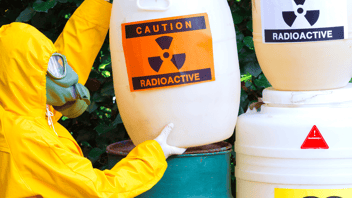Safety is absolutely everyone’s responsibility. Every employee is tasked with looking out for themselves and their coworkers, and supervisors and managers are responsible for sometimes hundreds of employees’ safety. It really is a team effort.
Coming into work prepared for a safe day means showing up mentally and physically sound. Staying safe and responsible on the job means looking out for those around you and reporting potentially hazardous situations. Leading a safe team means being aware and taking the appropriate actions when necessary.
Angela Diver, Executive Director of Reach EAP, has worked in employee assistance programs since 2004, so she’s had tons of experience with substance abuse and mental health issues in the workplace. You or your employees may have noticed some of these issues on the job but weren’t sure how to handle it. Angela’s got a few tips for that.
How to Identify Mental or Substance Issues
Confronting an employee or coworker about an issue with drugs, alcohol, or mental illness can be a difficult situation. It’s like walking on eggshells. Angela explains that the first step is careful observation.
“The most important thing I think is that—for someone who could have an alcohol or drug problem on the job—you’re looking for a pattern of behavior,” she said.
Some behaviors are easily spotted and associated with these problems: the smell of alcohol, slurred speech, stumbling, or nodding off on the job. These can be especially noticeable in employees who have otherwise been great team members in the past. It’s important to remember, however, that you’re looking for a pattern of behaviors and not just a one-time bad day.
Another tip from Angela is to use a reasonable suspicion checklist. Create a list of abnormal behaviors to look out for with some helpful guidelines. Without knowing the employees personally, it can be tough to identify what’s out of the norm.
How to Address Known Issues
So after you or your employees have noticed a pattern of unusual behavior and have gone through a reasonable suspicion checklist, how do you address the issue?
Employees should feel assured that their reporting is completely confidential. They should also know that they can report this kind of behavior to supervisors without fear of retribution, even if their suspicions turn out to be wrong. A good leader would rather err on the side of safety, so all concerns should be brought forward.
If a coworker appears to be intoxicated or unstable on the job, employees shouldn’t feel helpless. “You have the right to refuse to work with somebody who you think could be under the influence,” said Angela.
According to Angela, “The best workplaces are the ones that say, ‘if you have a drug or alcohol problem, we encourage you to get help first before it becomes an issue here in the workplace.’” Support from supervisors and management can be a huge help for employees who are struggling. The point isn’t to punish the people who are causing hazards in the workplace; it’s to eliminate hazards and to help employees.
Key Takeaways
- Substance abuse, whether legal or illegal, has no place in the workplace. Employees with a problem are entitled to help.
- All employees are entitled to safety. By working under the influence, you endanger yourself and everyone around you.
- Supervisors should encourage all employees to speak up if they witness a problem in the workplace. These communications can be kept confidential.
- EAPs and their employees, like Angela, are there to help. Using resources like this can help you to maintain a safer, healthier workforce.






Leave a Comment